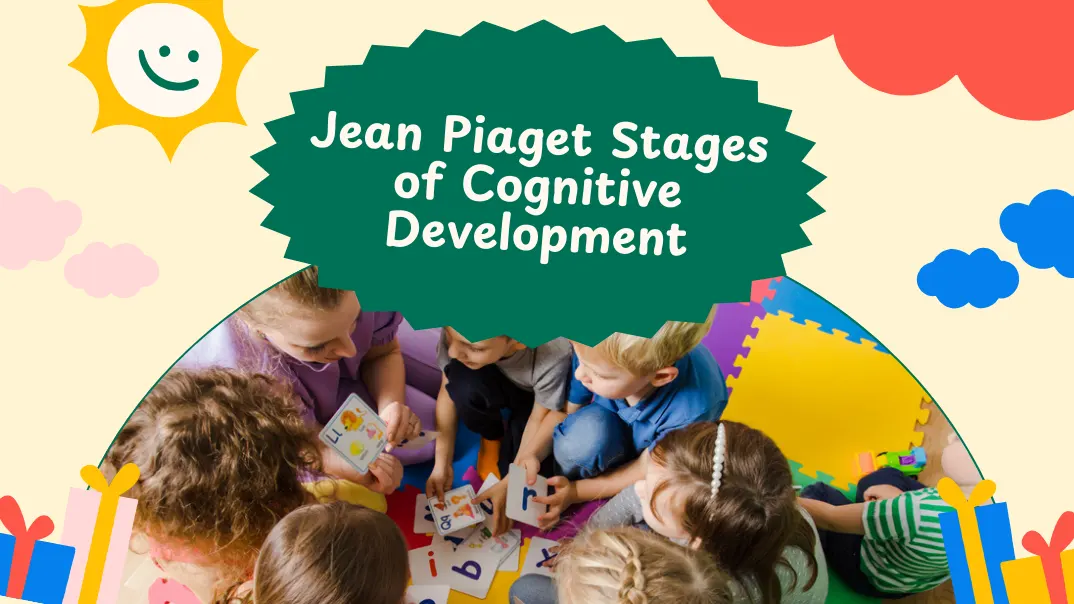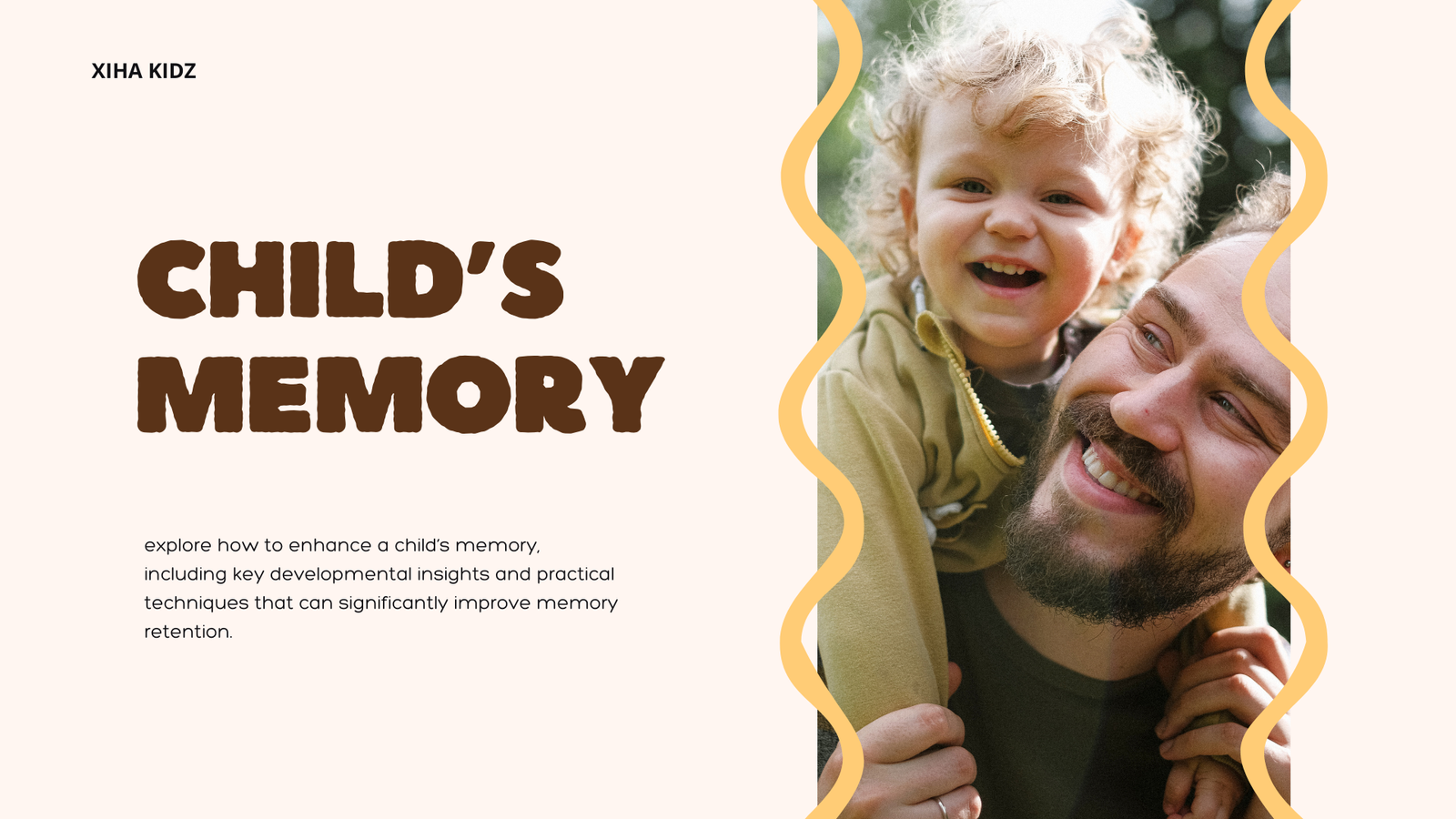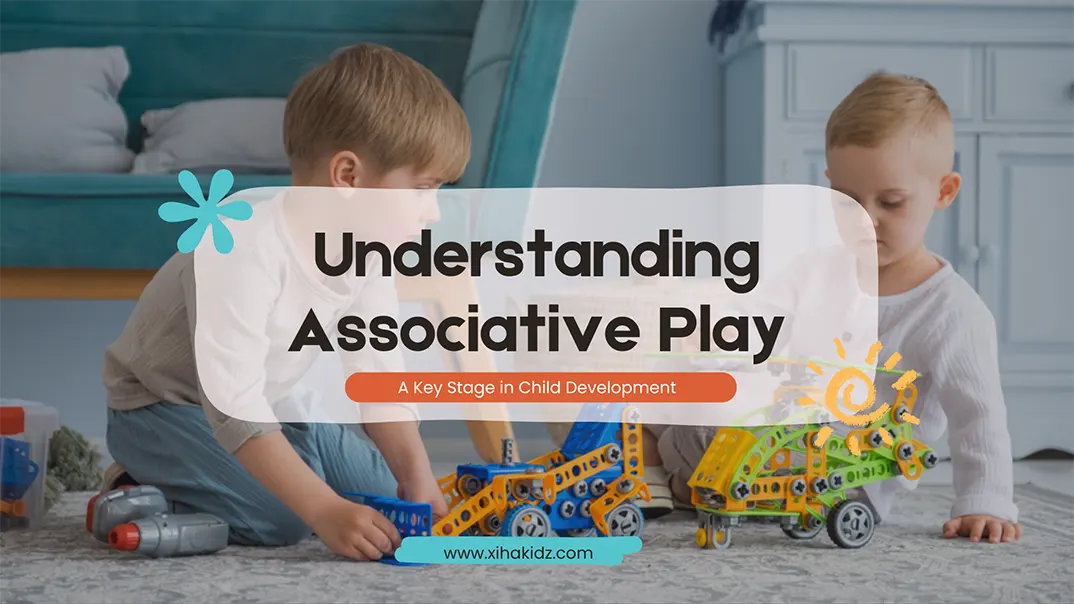Have you ever wondered how children develop their thinking skills? Why do they view the world differently at different ages? What causes this transformation? Understanding Jean Piaget stages of cognitive development is the key to answering these questions.
Jean Piaget’s theory of cognitive development outlines the stages children progress through as they grow and learn. The Piaget stages—sensorimotor, preoperational, concrete operational, and formal operational—provide a roadmap for understanding how children develop logical thinking, problem-solving abilities, and perception of the world around them.
As we delve deeper into Piaget’s stages, you’ll learn how this theory informs how we view child growth and offers practical applications in educational settings. Understanding Piaget’s stages can better support children’s cognitive development and create effective learning environments.

Who is Jean Piaget?
Jean Piaget, a Swiss psychologist born in 1896, is widely recognized as one of the founding figures in developmental psychology. With an academic background in biology and philosophy, Piaget’s interdisciplinary approach enabled him to examine how knowledge develops in humans, particularly children.
He wasn’t just interested in what children know and how they learn it. His research revolved around children’s cognitive processes at various ages and how these processes differ from adults. Piaget’s curiosity sparked a revolution in psychology and education, shifting the view of children from passive recipients of knowledge to active participants in their learning journey.
His groundbreaking work emphasized that children are not just “miniature adults” but unique beings who go through specific stages of intellectual growth. Piaget’s insights revealed that children actively construct their knowledge through interaction with the environment, not just by passively absorbing information.
Piaget worked extensively with children, using open-ended questioning and simple problem-solving tasks to understand their reasoning. This qualitative method revealed patterns in children’s thoughts that led to the development of his famous theory on the stages of cognitive development.
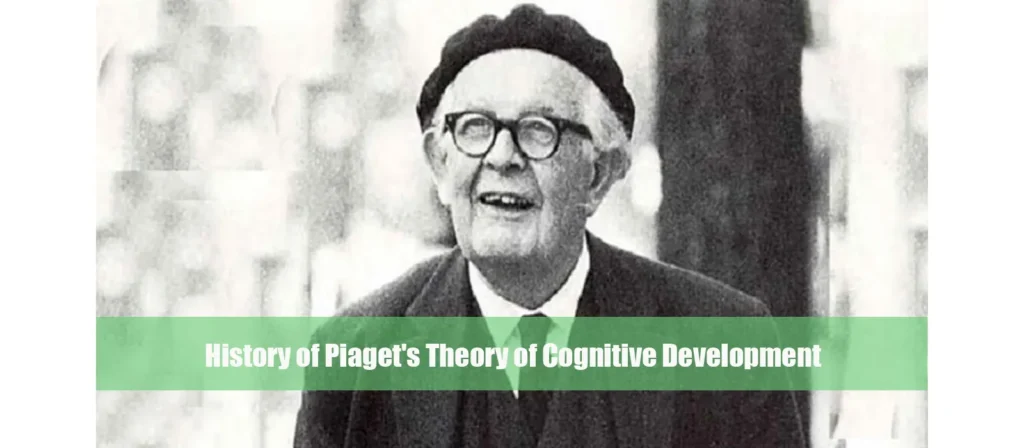
Storia della teoria dello sviluppo cognitivo di Piaget
Piaget’s interest in cognitive development stemmed from his observations as a researcher at the Binet Institute in Paris, where he was tasked with standardizing intelligence tests. He noticed that children consistently made certain types of errors at particular ages, which suggested that their reasoning changed qualitatively with age.
Rather than viewing development as a linear increase in knowledge, Piaget proposed that children go through a series of stages—each characterized by different ways of thinking and understanding the world. He introduced four primary stages: sensorimotor, preoperational, concrete operational, and formal operational.
Over decades, Piaget refined his theory through empirical studies, laying the groundwork for constructivist learning models that emphasize hands-on experiences and active discovery.
His works, such as “The Origins of Intelligence in Children“ (1952) and “The Psychology of the Child“ (1969), continue to influence developmental psychology and educational practice globally.
Trasforma la tua aula con soluzioni di arredamento personalizzate
Benefits of Piaget’s Theory
Piaget’s theory offers many practical benefits for education, parenting, and child psychology. Below are the key benefits of his theory:
- Inform Education
Piaget’s theory promotes developmentally appropriate education. Teachers can design learning experiences that match their students’ cognitive abilities, ensuring that children are neither bored with overly simple tasks nor frustrated by excessively complex ones. - Personalized Learning
Educators and parents can adapt methods and expectations to suit individual learning curves by recognizing that children develop at different rates. This fosters personalized learning, allowing each child to progress at their own pace while building on their cognitive abilities. - Promote Active Learning
Piaget emphasized that children are active learners who construct knowledge through interaction with their environment. This concept of active learning encourages a hands-on approach to education, where children explore, experiment, and learn from real-life experiences rather than relying solely on the passive absorption of information. - Holistic Development
Piaget’s stages also help promote a more holistic view of a child’s development. His theory highlights the interconnectedness of cognitive, social, and emotional development, showing that intellectual growth is deeply linked with a child’s overall development. - Guide Parenting
For parents, Piaget’s stages provide valuable insights into how children think and process information at various ages. By understanding these stages, parents can better communicate with their children, create appropriate learning environments, and offer support at critical points in their sviluppo cognitivo.
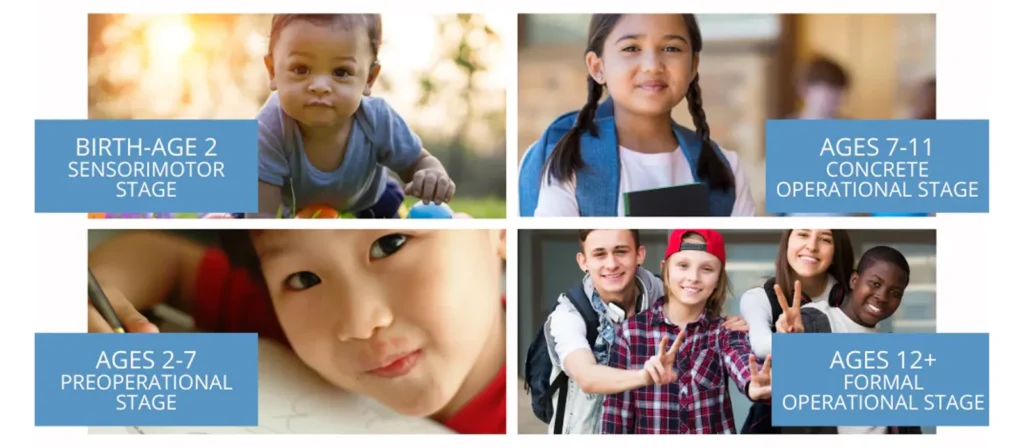
Piaget’s 4 Stages of Cognitive Development
Jean Piaget described a universal sequence of four stages in children’s cognitive development. Each stage is characterized by new abilities and ways of processing the world. Here’s a comprehensive look at each one:

Sensorimotor Stage (Birth to 2 Years Old)
The sensorimotor stage is the first cognitive stage in Piaget’s theory. In this period, infants primarily engage with the world through their senses and motor actions. Initially, newborns do not understand that objects continue to exist when out of sight, and their world is limited to what they can directly experience.
As the infant grows, their understanding becomes more sophisticated. They begin to develop object permanence—the realization that objects continue to exist even when they cannot be seen, heard, or touched. By the end of this stage, infants begin using their developing senses and motor abilities to experiment with the environment, forming an early foundation for problem-solving.
Developmental Changes in the Sensorimotor Stage:
- The realization is that objects continue to exist even when they are out of sight. This typically develops between 8 and 12 months.
- Infants start to engage in actions with an intention or goal, such as pushing a toy away to reach another.
- Early reflexes (like sucking) become more intentional and coordinated over time.
- Infants imitate actions or sounds they see from others, such as waving or clapping their hands.
- Infants begin to understand cause and effect relationships, like realizing that shaking a rattle produces noise.
The Sensorimotor Stage Consists of 6 Sub-Stages
| Sub-Stage | Age Range | Description |
|---|---|---|
| Reflex Application | 0-2 months | Infants exhibit reflexive behaviors, such as sucking and grasping, which are involuntary responses to stimuli. This sub-stage forms the foundation of all later behaviors. |
| Primary Loop Reaction | 1-4 months | Infants start to repeat actions that are pleasurable, such as sucking on their thumb or moving their body in response to a sensation, and begin to show basic voluntary behaviors. |
| Secondary Loop Reaction | 4-8 months | The child starts to repeat actions that affect their external environment, such as shaking a rattle to make a sound, showing intentionality in their actions. |
| Secondary Plan Coordination | 8-12 months | Children begin coordinating multiple actions to achieve a goal, like crawling to a toy and then using their hand to pick it up. They also start to understand object permanence. |
| Tertiary Loop Reaction | 12-18 months | Children begin experimenting with new behaviors to explore the effects of their actions, such as dropping objects from different heights or trying to interact with new objects. |
| Intelligence Combination | 18-24 months | Infants start to repeat pleasurable actions, such as sucking on their thumb or moving their body in response to a sensation, and begin to show basic voluntary behaviors. |

Preoperational Stage (2 to 7 Years Old)
The preoperational stage, spanning ages 2 to 7, marks a period of rapid cognitive growth, where children begin to use symbolic thinking. They can represent objects, actions, and ideas with words and images, allowing for more complex play and communication. However, their thinking remains quite egocentric, meaning they often struggle to understand perspectives other than their own. Logical thinking is not fully developed at this stage.
Developmental Changes in the Preoperational Stage:
- Egocentrism: Children cannot see things from perspectives other than their own. For example, a child may assume others know what they think or see.
- Animism: Children believe that inanimate objects have lifelike qualities. For instance, a child might think their toy car feels sad if it isn’t used.
- Centration: A focus on one aspect of a situation while ignoring others. For example, when given two differently shaped glasses with the same amount of liquid, they may believe the taller glass holds more because they focus on height alone.
- Symbolic Play: Children engage in imaginative play, such as pretending a stick is a sword or using a box as a house. This ability helps them understand abstract concepts in later stages.
- Language Development: Rapid growth in language skills, allowing children to form simple sentences, ask questions, and express ideas.

Concrete Operational Stage (7 to 11 Years Old)
The Concrete Operational stage is the third stage of Piaget’s cognitive development theory, occurring between the ages of seven and eleven. Children’s thinking becomes more logical and organized in this stage, especially when dealing with concrete objects and situations. However, children still struggle with abstract reasoning and hypothetical situations.
During this stage, children better understand the concepts of conservation, reversibility, and classification. They can perform mental operations on tangible objects and events but struggle to apply logic to abstract or hypothetical scenarios.
Developmental Changes in the Concrete Operational Stage:
- Conservation: Children understand that quantities remain the same despite changes in shape or appearance. For example, a child will recognize that the amount of liquid remains the same even when poured into a differently shaped container.
- Reversibility: Children understand that actions can be reversed to return to the original state. For instance, they can mentally undo addition and subtraction operations.
- Decentration: Children become able to consider multiple aspects of a situation simultaneously. They are no longer limited to focusing on only one feature (such as the height of a glass of water).
- Classification: Children begin to categorize objects into different groups based on shared properties. For example, they can group animals into categories like mammals or reptiles.
- Seriation: Children develop the ability to order objects by size, length, or other dimensions. For example, arranging sticks from shortest to longest.
- Logical Thinking: Children learn to apply logic to solve problems involving concrete objects and situations, such as simple math problems or puzzles.

Formal Operational Stage (11 Years Old Through Adulthood)
The formal operational stage begins around age 11 and continues into adulthood. This stage marks the onset of more complex and abstract thinking. Adolescents at this stage can now think logically about hypothetical situations and use deductive reasoning. They can also consider future possibilities and think systematically about potential outcomes.
Developmental Changes in the Formal Operational Stage:
- Abstract Thinking: Adolescents develop the ability to think about concepts not directly tied to concrete experiences. They can think about hypothetical scenarios and engage in abstract problem-solving, like considering moral dilemmas or scientific hypotheses.
- Hypothetical-Deductive Reasoning: Adolescents can formulate hypotheses and test them logically. For example, they might hypothesize about the outcome of an experiment and test their predictions systematically.
- Metacognition: The ability to think about one’s thinking. Teenagers can reflect on their cognitive processes and consider how their thoughts influence decisions and actions.
- Idealism: Adolescents often develop idealistic visions about the world during this stage. They can think about what “should” happen regarding morality, justice, or politics, even if they cannot apply these ideals to real-life situations.
- Systematic Problem-Solving: Adolescents can tackle problems more organizedly, using logic and strategies to solve complex issues, unlike in earlier stages, when they relied more on trial and error.
- Planning for the Future: Individuals can anticipate future events and make decisions with long-term consequences in mind.
Trasforma la tua aula con soluzioni di arredamento personalizzate
Piaget’s Theory vs. Vygotsky’s Theory
Piaget and Lev Vygotsky have profoundly influenced developmental psychology but differ in key ways. Here’s a comparison:
| Feature | Piaget’s Theory | Vygotsky’s Theory |
|---|---|---|
| Messa a fuoco | Individual discovery and stages | Social interaction and cultural tools |
| Learning Mechanism | Constructivist (self-driven learning) | Social constructivist (learning via others) |
| Ruolo del linguaggio | Develops after cognition | Crucial to cognitive development |
| Stages of Development | Fixed, universal stages | No fixed stages, development is fluid |
| Peer Interaction | Enhances understanding through conflict | Learning occurs via more knowledgeable peers |
| Environment’s Role | Secondary to maturation | Central to learning process |
| Zone of Proximal Development | Not applicable | Central concept (learning with support) |
Important Concepts in Piaget’s Theory
Piaget’s theory includes several foundational concepts that help explain how children develop their cognitive abilities. These concepts are pivotal in understanding how children evolve from simple reflexes to complex thought processes. Here are some of the core ideas:

1. Schema
Schemas are mental structures or frameworks that help individuals organize and interpret information. In Piaget’s theory, a schema is how a child understands the world based on prior experiences and knowledge. As children encounter new experiences, they adapt their schemas or create new ones to accommodate this information.
2. Constructivism
Piaget’s theory is rooted in constructivism, which emphasizes that children actively construct their knowledge by interacting with their environment. Rather than passively absorbing information, children learn by exploring and experimenting, creating and adjusting their cognitive frameworks.
3. Accommodation
Accommodation occurs when new experiences don’t fit into existing schemas, and the child must adjust their mental framework to incorporate new information. For instance, a child who knows that a dog is a four-legged animal might encounter a cat and revise their schema to recognize that a cat, though different, is also a four-legged animal.
4. Assimilation
Assimilation is the process by which children incorporate new experiences into existing schemas. For example, if a child has a schema for dogs as four-legged, furry animals, they might see a cat and assimilate it into that schema without realizing it’s a different animal. In other words, the new information is interpreted through the child’s preexisting mental structure.
5. Balance (Equilibration)
Balance, or equilibration, is how children restore cognitive balance when encountering new information that challenges schemas. This process involves moving between assimilation and accommodation to reach a stable understanding of the world. When children are in a state of equilibrium, they feel mentally balanced and able to understand their experiences.

How to Use Piaget Stage Developmental Theory?
Piaget’s stages of cognitive development offer valuable insights into how children’s thinking evolves. Educators and parents can use this framework to understand children’s developmental needs better and create appropriate learning experiences.
- Apply Stages to Education: By recognizing which stage a child is in, educators can tailor lessons and activities to match the child’s cognitive abilities. For instance, children in the sensorimotor stage benefit from hands-on activities, while children in the formal operational stage are ready to engage in abstract reasoning.
- Encourage Active Learning: Piaget’s theory emphasizes the importance of active learning. Teachers and parents can encourage children to explore their environments, ask questions, and engage in problem-solving activities that stimulate their cognitive growth.
- Foster Cognitive Conflict: Introducing challenges that cause children to question their existing schemas helps stimulate cognitive development. For example, asking questions that encourage a child to think critically and reconsider their assumptions can promote more profound understanding.
- Design Age-Appropriate Learning Activities: By understanding the stages of cognitive development, educators can design learning activities that match children’s mental abilities at each stage. Activities for children in the concrete operational stage can include problem-solving tasks and logical reasoning exercises.
- Be Supportive During Transitions: As children move from one cognitive stage to the next, they may experience challenges or difficulties. It is essential to provide support and guidance during these transitions to help them navigate the new cognitive demands.
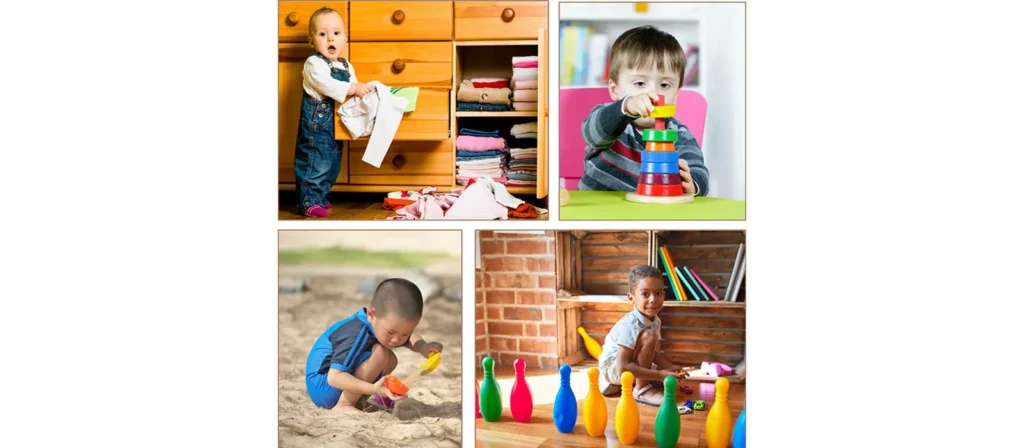
Piaget’s 4 Types of Games
Piaget also recognized that play is a key component in cognitive development, allowing children to experiment, solve problems, and build skills. He identified four primary types of games that reflect the child’s developmental stage. Here’s a look at each type:
Functional Games
Functional games involve simple, repetitive actions that allow children to practice basic motor skills and develop physical coordination. For example, a baby might enjoy repeatedly dropping a toy from their high chair to observe how it falls. These games are foundational for sensory and motor development.
Constructive Games
In constructive games, children use their creativity and problem-solving skills to build or create things. This might include stacking blocks, assembling puzzles, or making a simple drawing. These activities help children develop spatial reasoning, hand-eye coordination, and the ability to plan and execute tasks.
Symbolic/Fantasy Games
Symbolic or fantasy games involve pretending and using imagination. For example, children might pretend a stick is a sword or a cardboard box is a house. This type of play fosters creativity and allows children to practice social roles, enhance language skills, and understand abstract concepts.
Games with Rules
As children mature, they engage in games with rules, such as board games or sports. These games require understanding structured rules, taking turns, and cooperating with others. They promote social skills, self-regulation, and strategic thinking, which are crucial for cognitive development in later stages.
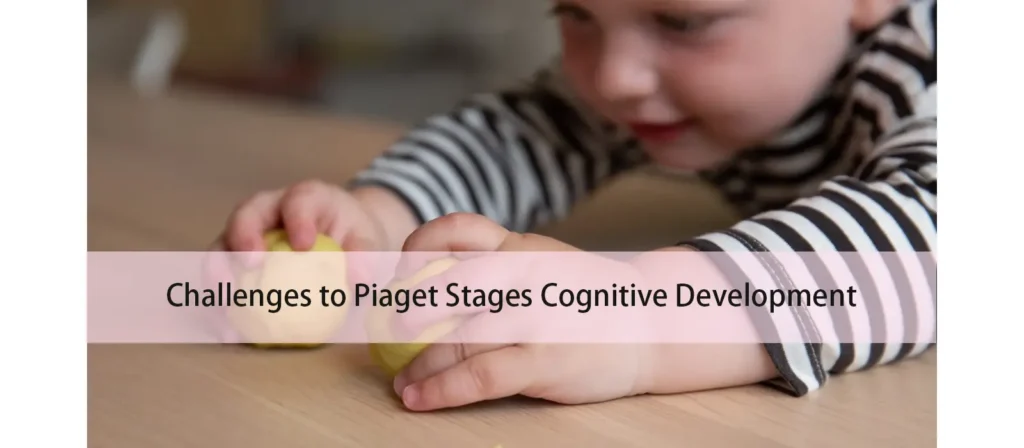
Challenges to Piaget Stages Cognitive Development
While Piaget’s theory has profoundly influenced the understanding of cognitive development, it has also faced criticism and challenges. Some argue that Piaget underestimated children’s mental abilities, especially in the early stages. Recent research suggests that children may develop specific skills earlier than Piaget predicted, particularly in object permanence and social cognition.
Other critiques focus on Piaget’s rigid stage theory. Modern developmental psychology acknowledges that cognitive development is more fluid and dynamic, with some children showing advanced skills in specific areas before others. Additionally, Piaget’s theory has been challenged for not sufficiently accounting for the influence of culture and social interactions on development. Vygotsky’s sociocultural theory, for example, emphasizes social factors and collaborative learning more.
FAQs
- How can Piaget’s theory be applied in the classroom?
Educators can use Piaget’s theory to align teaching strategies with children’s developmental stages, ensuring that activities and learning materials match their cognitive abilities. - What are the criticisms of Piaget’s theory?
Piaget’s theory has been criticized for underestimating children’s abilities, especially in the early stages, and for not sufficiently accounting for social and cultural factors in cognitive development. - At what age do children enter the formal operational stage?
The formal operational stage typically begins around 11, during which children develop the ability to think abstractly and solve hypothetical problems. - At what stage does a child develop object permanence?
Object permanence develops during the Sensorimotor stage, typically between 6 and 8 months of age. - What is egocentrism in Piaget’s theory?
Egocentrism refers to children’s inability to understand that others may have different perspectives in the Preoperational stage. - How has Piaget’s theory influenced education?
Piaget’s stages have influenced educational practices by encouraging age-appropriate learning activities. For example, younger children benefit from hands-on experiences, while older children can engage in more abstract and logical tasks.
Conclusione
Jean Piaget’s stages of cognitive development continue to shape our understanding of how children learn and grow. His theory emphasizes the importance of a child’s active role in constructing knowledge and highlights the need for developmentally appropriate learning experiences. Although his theory has faced some criticisms, it remains a cornerstone of developmental psychology, offering valuable insights into the processes behind intellectual growth.
Piaget’s research reminds us that cognitive development is not a straightforward process but a transformation journey. Each stage builds upon the last, leading to more sophisticated and abstract thinking as children mature. By understanding the key features of Piaget’s stages, we can better support children’s cognitive development and create environments that foster curiosity, creativity, and critical thinking.

